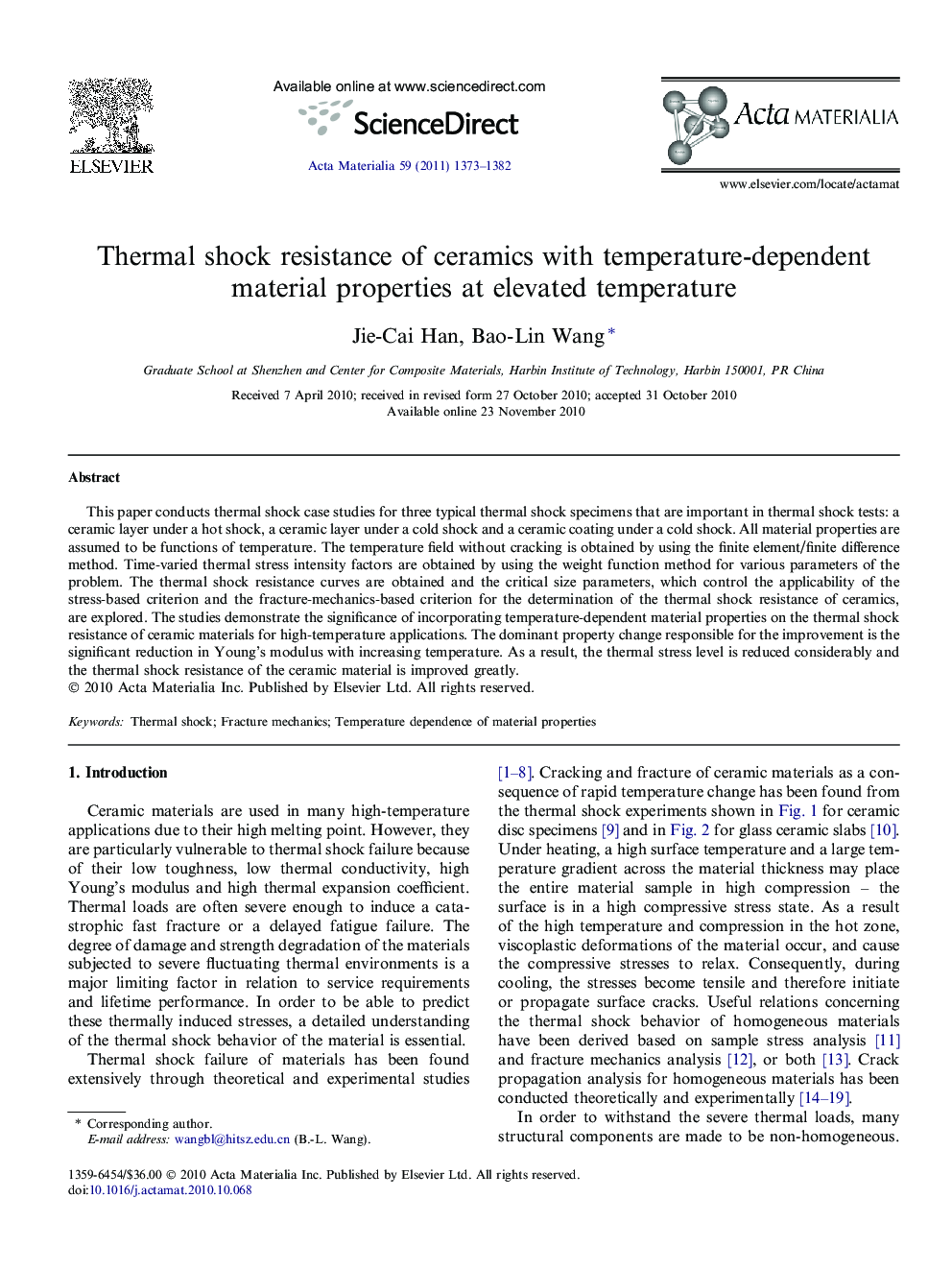| Article ID | Journal | Published Year | Pages | File Type |
|---|---|---|---|---|
| 10620592 | Acta Materialia | 2011 | 10 Pages |
Abstract
This paper conducts thermal shock case studies for three typical thermal shock specimens that are important in thermal shock tests: a ceramic layer under a hot shock, a ceramic layer under a cold shock and a ceramic coating under a cold shock. All material properties are assumed to be functions of temperature. The temperature field without cracking is obtained by using the finite element/finite difference method. Time-varied thermal stress intensity factors are obtained by using the weight function method for various parameters of the problem. The thermal shock resistance curves are obtained and the critical size parameters, which control the applicability of the stress-based criterion and the fracture-mechanics-based criterion for the determination of the thermal shock resistance of ceramics, are explored. The studies demonstrate the significance of incorporating temperature-dependent material properties on the thermal shock resistance of ceramic materials for high-temperature applications. The dominant property change responsible for the improvement is the significant reduction in Young's modulus with increasing temperature. As a result, the thermal stress level is reduced considerably and the thermal shock resistance of the ceramic material is improved greatly.
Keywords
Related Topics
Physical Sciences and Engineering
Materials Science
Ceramics and Composites
Authors
Jie-Cai Han, Bao-Lin Wang,
